“Θέλουμε όλα τα εκπαιδευτικά συστήματα για να διδάξουν τα παιδιά να γίνουν δημιουργικοί Changemakers για τους ίδιους και για έναν καλύτερο κόσμο.” – έκτακτης Beamer
Μια ταχέως μεταβαλλόμενο κόσμο έχει πολλά μεγάλα προβλήματα να λύσει. Τα παιδιά αρέσει να έρχονται με τις δικές τους ιδέες για τα μεγάλα προβλήματα. Πώς μπορεί η δημιουργικότητα και το πάθος να διοχετεύονται σε δύο σχετικές μάθηση και τη βελτίωση του πλανήτη θα κληρονομήσουν?
Εισάγετε Emer Beamer. Η ώθηση για την εκκίνηση, Designathon Έργων, ήταν το σχέδιο «δουλειά» που έκανε με μειονεκτούντων νέων σε όλη την υποσαχάρια Αφρική και σε πολλές ασιατικές χώρες. Ξανά και ξανά παρατήρησε ότι οι νέοι ήθελαν να είναι παράγοντες αλλαγής για τον κόσμο τους. Η μέθοδος Designathon συνδυάζει πτυχές της σκέψης του σχεδιασμού και τσάι Εκπαίδευση. Και οι δύο αυτές προσεγγίσεις μάθησης κερδίζει έδαφος στα εκπαιδευτικά συστήματα σε όλο τον κόσμο. Σήμερα, Designathon έχει κεφάλαια που βρίσκονται στην Ολλανδία, Ντουμπάι, Νότια Αφρική, Αρούμπα, Καναδάς, Ινδία, Κροατία, Σερβία, Πολωνία, και την Ισπανία, συν μια ετήσια εκδήλωση που φιλοξενείται από πάνω 25 cities around the world.
Η Σφαιρική Αναζήτηση για Εκπαίδευση is pleased to welcome Emer Beamer, the founder of Designathon Works, to talk about how her model is innovating learning.
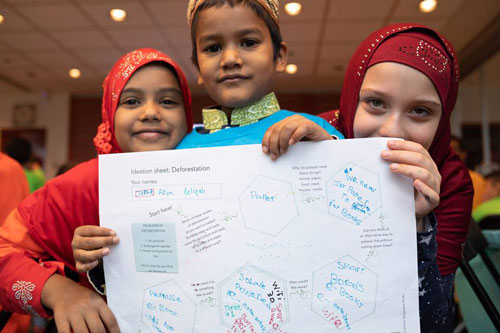
“Our unique value proposition for learners lies in the combination of these three pillars: δημιουργικής σκέψης, technological literacy, and being invited to apply themselves to global issues.” – έκτακτης Beamer
Emer, how would you describe the unique value proposition you offer your learners?
Our unique value proposition for learners lies in the combination of these three pillars: δημιουργικής σκέψης, technological literacy, and being invited to apply themselves to global issues. To explain, πολλά προγράμματα για παιδιά τολμούσα να τους προσφέρουμε μικρές και σχετικά ασήμαντα ζητήματα για την αντιμετώπιση, όπως όταν πρέπει να τοποθετηθεί ένα φως του δρόμου. Σε ένα σχέδιο-athon, ωστόσο, παιδιά πάμε στη δουλειά μας σε θέματα όπως η πλαστική σούπα, την αλλαγή του κλίματος, και τα προβλήματα των προσφύγων. Το μέγεθος των θεμάτων που είναι ιδιαίτερα ενθαρρυντικό, αλλά και αντιστοιχεί στο επίπεδο ανησυχίας παιδιά εμπειρίας. Θέλουν να σκεφτούν μεγάλο.
Πες μας μια ιστορία που δείχνει πώς λειτουργεί το πρόγραμμα - τους στόχους και τις προκλήσεις?
Κατά τη διάρκεια του Παγκόσμιου Παιδική Designathon, the children learned about deforestation through an interactive themed presentation followed by a discussion. In order to have the highest impact on future endeavors, the children are urged to tackle the causes of deforestation rather than the consequences. The causes for cutting down trees are (1) υλικά (wood & paper), (2) to make space for cities and roads, και (3) to use land for agriculture, specifically cows. After exploring the topic as a group, the children split into teams to ideate using the ideation worksheet which helps them channel their ideas, exchange with each other, and step-for-step agree on an idea to help solve the problem. As they work, εμείς, as facilitators, check in to see if they need help. A few teams then share their ideas with the whole group to clarify their concepts and inspire the others. The next step is to make a functional drawing of their idea. The children then visualize their idea and explain with words and arrows how it will work.
After this step, another few teams share their sketch and idea with the whole group for more feedback. It’s almost time to start making now, but first, we are going to exchange via Skype with a group of children in South Africa. They are working on the same theme so we can find out what they have come up with.
A few of the ideas so far include:
The Mazingira App is designed by children to raise awareness amongst children about the effects of climate change. It helps them acquire enough information, πόροι, and knowledge necessary for protecting the environment.
The planting organization device (POD) is a rolling robot fit to detect deforestation and find fertile ground to immediately plant a tree as a replacement.
The making part of the project is the longest and the best according to most children. There are a great variety of materials to work with to create your idea, from recycled materials and clay to a whole Maker Kit with a motor, a light, propellers, and switches, so you can make the prototype really work.
There is never enough time to finish the prototype as well as we want. But the time is up, and the parents and experts are here for you to present to. Each team gets two minutes to present their idea and what they made. The experts ask questions.
Every child gets a certificate of participation. The government representative chooses three projects which will be presented to the local government to see if they can take this idea a step further. The photographer takes pictures of all the children, the facilitators, and the experts. The children run to their parents to celebrate.
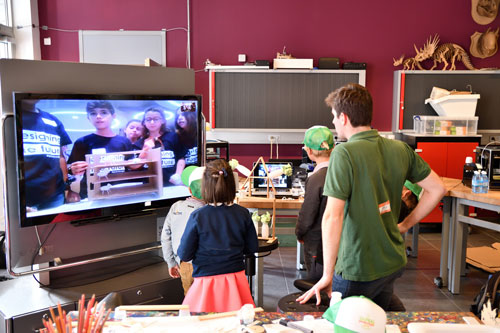
“Σε ένα σχέδιο-athon, παιδιά πάμε στη δουλειά μας σε θέματα όπως η πλαστική σούπα, την αλλαγή του κλίματος, and refugee problems.” – έκτακτης Beamer
It sounds inspiring! What feedback do you get from teachers and kids on your method?
We regularly survey both teachers and children, and the main takeaways we get from children are:
1. We love coming up with our own ideas for big problems.
2. Working together in a team is fun.
3. We love making with electronics.
This is irrespective of gender. The age group we target is 6-12 χρόνια.
Here are a couple of quotes from the children from our last global event:
“I learned to respect nature and to have a positive influence to save the world.” – GCD 2018 participant in Tunis, Tunisia
“If there were more Designathons around the world, we could save forests.” – Ilyas, 10, Montreal
68% of the children felt that the Global Children Designathon had a large positive impact on their creativity.
From the teachers, we hear nearly every time that they didn’t expect the children to be so creative and engaged.
In informal interviews and general feedback during and after the workshops, we discovered that most adults were surprised by the way children were able to tackle the problems. Comments like “surprisingly creative” ή “the way they think is really unexpected” are examples.
This lack of expectation shows us that adults don’t realize that children have the potential to produce some of the ideas. Unwittingly, we suspect that these low expectations conspire against the possibilities for cultivating creativity and agency in children.
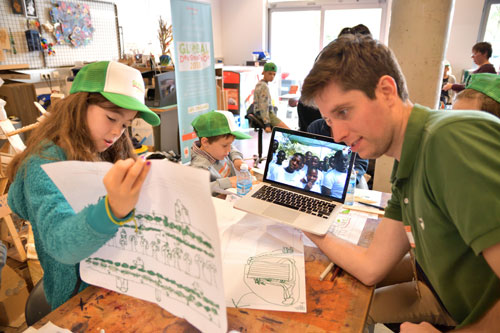
“From the teachers, we hear nearly every time that they didn’t expect the children to be so creative and engaged.” – έκτακτης Beamer
How involved are your learners in shaping your curriculum?
We have a series of themes which all follow the same design thinking and maker education approach; we call them a design-athon project. The themes the projects work on are linked to the sustainable development goals (SDGs). When we are choosing the themes, we check in with a group of children who have worked with us over the years, then we draft them in order to test it with at least two different groups of children. We also gather input on the themes from the global hosts of the event in countries around the world. Για παράδειγμα, last year’s theme was Deforestation (part of SDG 15 Life on Land), so we gathered input from teachers on how that issue was perceived in their country to provide further information on the theme.
Πιο σημαντικό, with a design-athon project, the children always get to decide themselves which aspect of the theme they want to focus on. In this way they contextualize it for themselves and make it relevant. Για παράδειγμα, one theme we offer is ‘Mobility,’ which is all about getting from A to B. Relevant problems can include the individual’s inability to move around freely, regardless of age or income. Ωστόσο,, it also relates to the environment. Do we have sustainable forms of transport? When we do this theme in Amsterdam, children often choose to focus on C02 or air quality in relation to car pollution. Ή, they may want to tackle traffic jams which stress their parents. In Nairobi, children chose to tackle the problem of drunken drivers causing crashes and Matatu drivers who race on the roads. Each team of three children choose their own perspective, thus ensuring that the problem they work on is one they consider to be an important problem worth solving.
Where do you see Designathon Works going in the next five years?
If we look at the life cycle of social innovation, we find ourselves after four years to have gone through two main stages: exploring the problem mentioned above and designing a solution. Then we spent another two years validating our business and impact models. We have made quite some progress towards replicating and scaling our methodology to schools and cities globally. Την ίδια στιγμή, we are not yet satisfied that the approaches we have for scaling are the best ones. Έτσι, we plan to spend another year on two tracks: one is to validate the methodology and it’s learning impacts, και η άλλη είναι να επανεξετάσουμε και να τελειοποιήσουν τις μεθόδους μας για να επιτύχουμε την αλλαγή του συστήματος. Ψάχνουμε σε έχει ένα φινάλε της ανοικτής μεθόδου προμήθεια μας όπου θα γίνει ένα κομβικό σημείο της γνώσης και να συνεργαστούν με τις κυβερνήσεις, καθώς υιοθετήσουν νέες πρακτικές μάθησης. Τελικά, Θέλουμε όλα τα εκπαιδευτικά συστήματα για να διδάξουν τα παιδιά να γίνουν δημιουργικοί Changemakers για τους ίδιους και για έναν καλύτερο κόσμο.
C. M. Rubin and Emer Beamer
Έλα μαζί μου και παγκοσμίως γνωστή ηγέτες σκέψης συμπεριλαμβανομένου του Sir Michael Barber (Ηνωμένο Βασίλειο), Ο Δρ. Michael Block (ΗΠΑ), Ο Δρ. Leon Botstein (ΗΠΑ), Καθηγητής Clay Christensen (ΗΠΑ), Ο Δρ. Linda Ντάρλινγκ-Hammond (ΗΠΑ), Ο Δρ. MadhavChavan (Ινδία), Charles Fadel (ΗΠΑ), Ο καθηγητής Michael Fullan (Καναδάς), Ο καθηγητής Howard Gardner (ΗΠΑ), Ο καθηγητής Andy Hargreaves (ΗΠΑ), Ο καθηγητής Yvonne Hellman (Η Ολλανδία), Ο καθηγητής Kristin Helstad (Νορβηγία), Jean Hendrickson (ΗΠΑ), Καθηγητής Rose Hipkins (Νέα Ζηλανδία), Καθηγητής Cornelia Hoogland (Καναδάς), Αξιότιμο Jeff Johnson (Καναδάς), Η κ. Chantal Kaufmann (Βέλγιο), Ο Δρ. EijaKauppinen (Φινλανδία), Υφυπουργός TapioKosunen (Φινλανδία), Ο καθηγητής Dominique Λαφοντέν (Βέλγιο), Ο καθηγητής Hugh Lauder (Ηνωμένο Βασίλειο), Lord Ken Macdonald (Ηνωμένο Βασίλειο), Ο καθηγητής Geoff Masters (Αυστραλία), Καθηγητής Barry McGaw (Αυστραλία), Shiv Nadar (Ινδία), Καθηγητής R. Natarajan (Ινδία), Ο Δρ. PAK NG (Σιγκαπούρη), Ο Δρ. Denise Πάπα (ΗΠΑ), Sridhar Rajagopalan (Ινδία), Ο Δρ. Diane Ravitch (ΗΠΑ), Richard Wilson Riley (ΗΠΑ), Sir Ken Robinson (Ηνωμένο Βασίλειο), Καθηγητής Pasi Sahlberg (Φινλανδία), Καθηγητής Manabu Sato (Ιαπωνία), Andreas Schleicher (PISA, ΟΟΣΑ), Ο Δρ. Anthony Seldon (Ηνωμένο Βασίλειο), Ο Δρ. David Shaffer (ΗΠΑ), Ο Δρ. Kirsten Μοναδική Are (Νορβηγία), Στήβεν Spahn (ΗΠΑ), Yves Theze (LyceeFrancais ΗΠΑ), Ο καθηγητής Charles Ungerleider (Καναδάς), Ο καθηγητής Tony Wagner (ΗΠΑ), Sir David Watson (Ηνωμένο Βασίλειο), Καθηγητής Dylan Γουίλιαμ (Ηνωμένο Βασίλειο), Ο Δρ. Mark Wormald (Ηνωμένο Βασίλειο), Ο καθηγητής Theo Wubbels (Η Ολλανδία), Ο καθηγητής Michael Young (Ηνωμένο Βασίλειο), και ο καθηγητής Minxuan Zhang (Κίνα) καθώς εξερευνούν τα μεγάλα ζητήματα της εκπαίδευσης εικόνα που όλα τα έθνη αντιμετωπίζουν σήμερα.
Η Παγκόσμια αναζήτηση για την Εκπαίδευση της Κοινότητας Σελίδα
C. M. Rubin είναι ο συγγραφέας των δύο πολυδιαβασμένα online σειρά για την οποία έλαβε ένα 2011 Βραβείο Upton Sinclair, «Η Παγκόσμια αναζήτηση για την Παιδεία» και «πώς θα Διαβάστε?"Είναι επίσης συγγραφέας τριών βιβλίων με εμπορική επιτυχία, ΣυμπεριλαμβανομένωνΗ Ρεάλ Αλίκη στη Χώρα των Θαυμάτων, Είναι ο εκδότης του CMRubinWorld και είναι ένα Ίδρυμα Fellow δι'υπερήχων.
Ακολουθήστε C. M. Rubin στο Twitter: www.twitter.com/@cmrubinworld

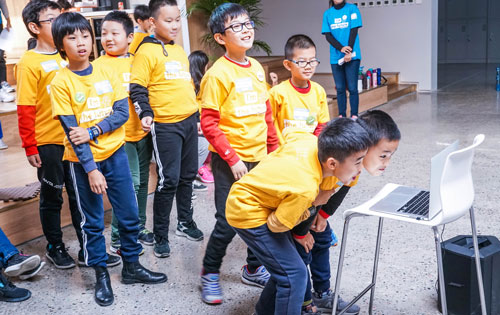

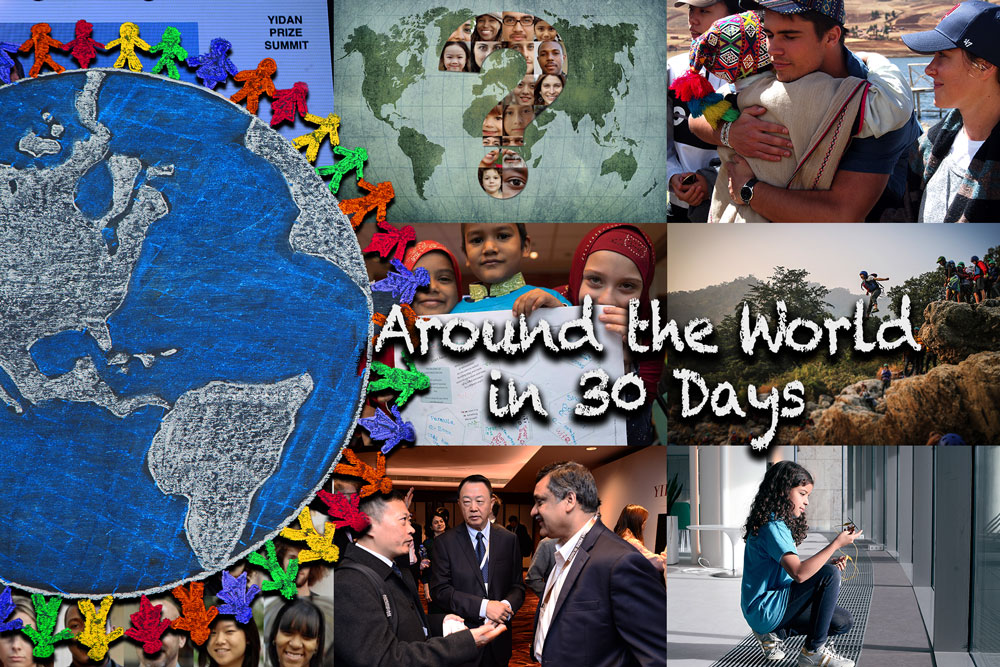

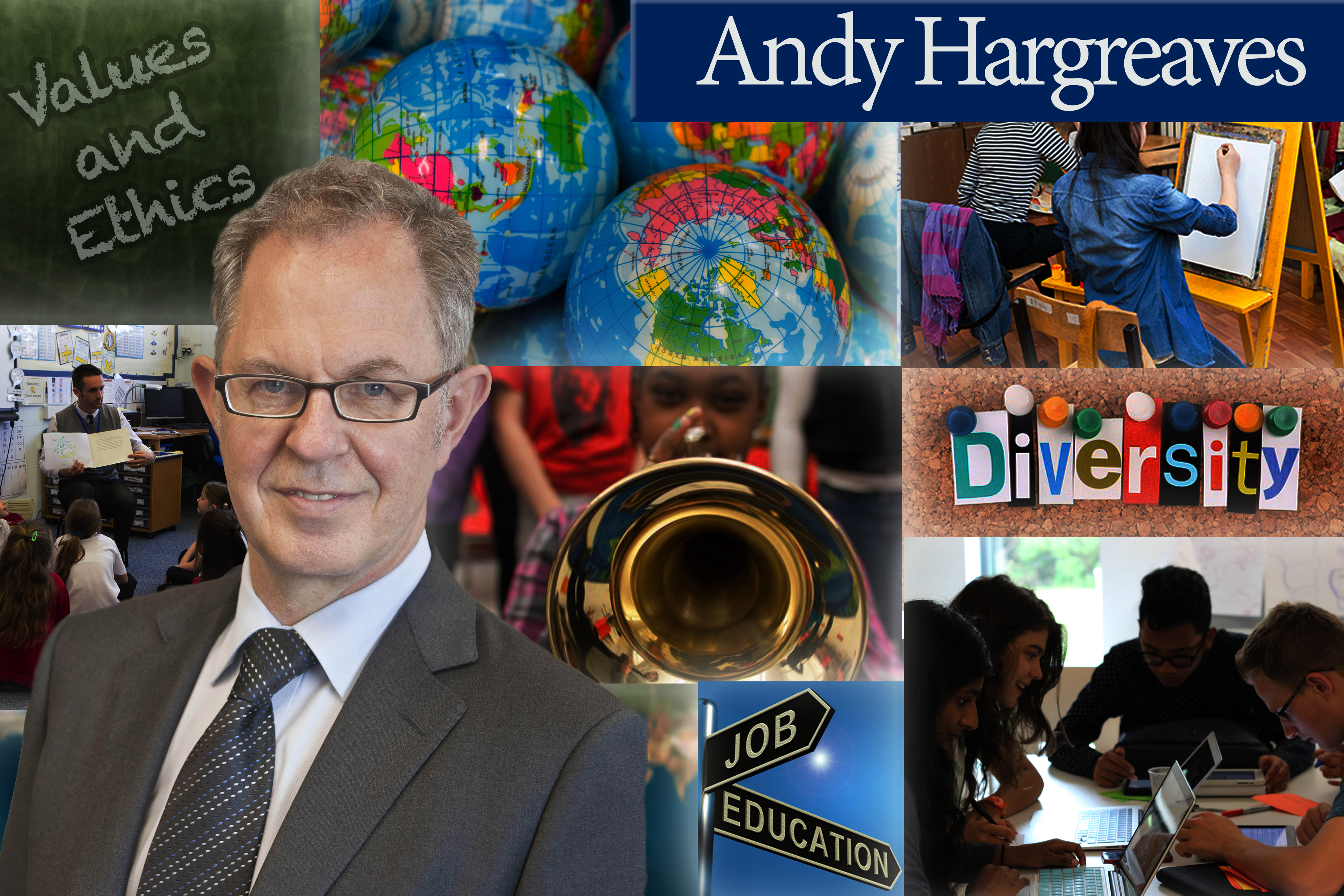
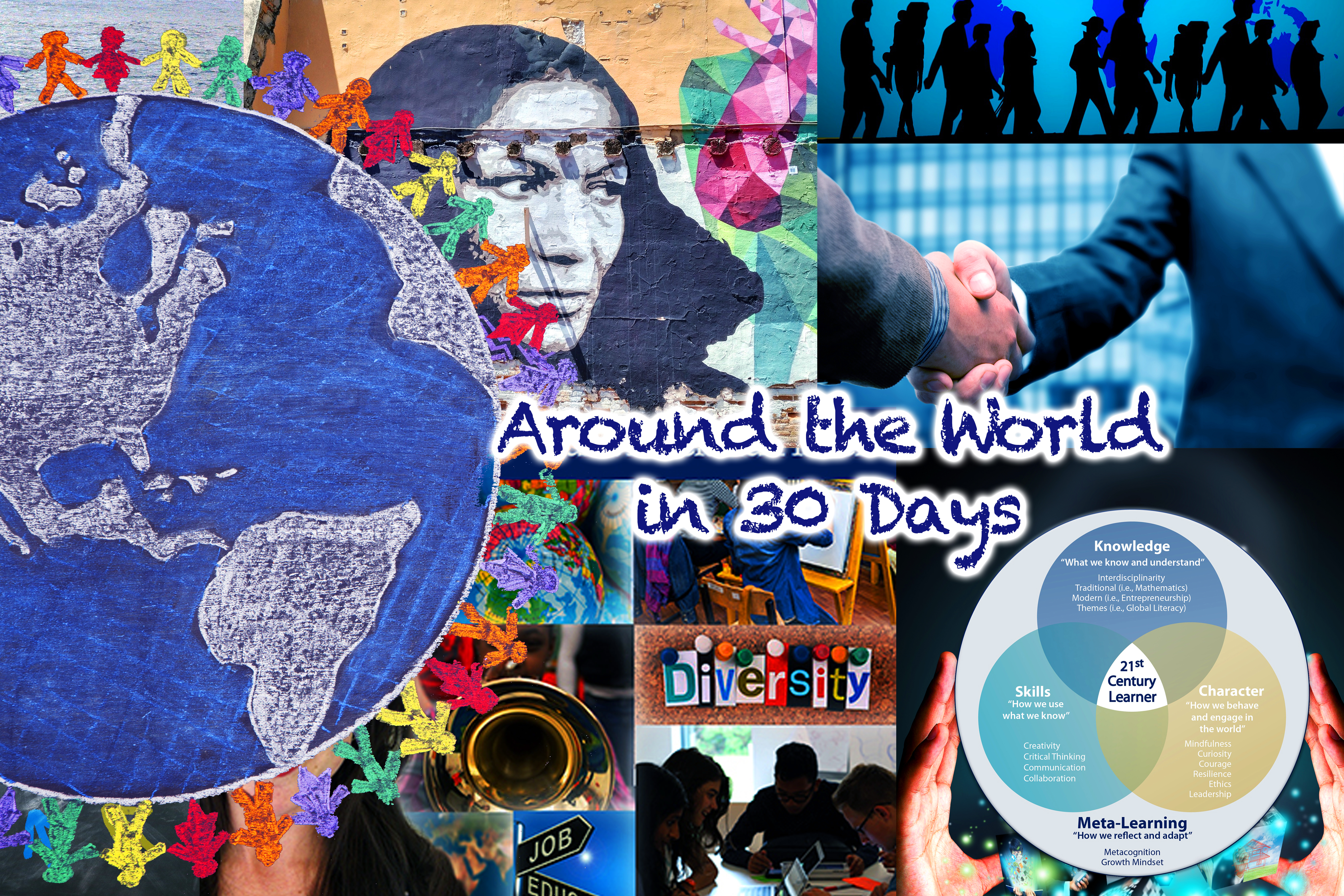
Πρόσφατα σχόλια